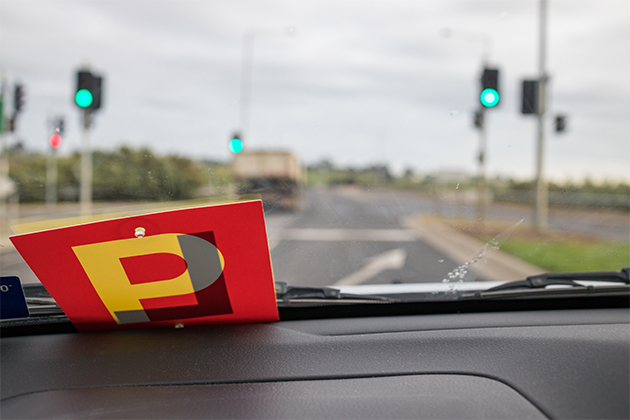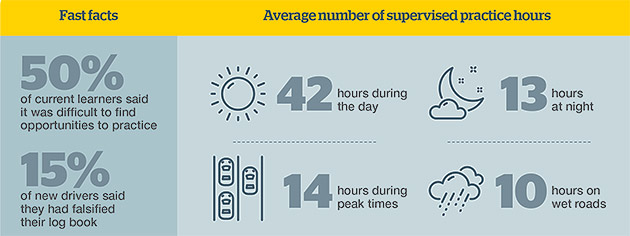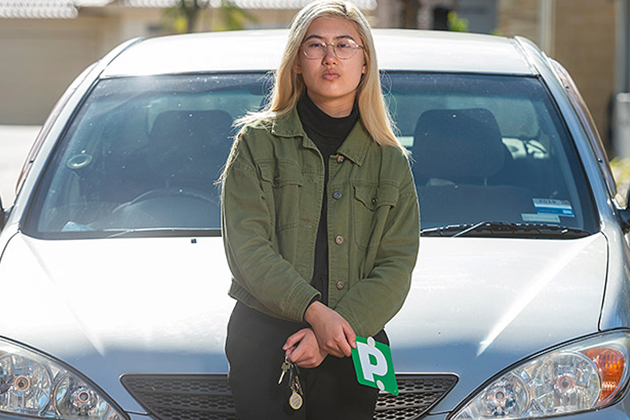6 November, 2019 By: Ruth Callaghan
With pass rates on driver licence tests continuing to slide in WA, a new survey by RAC looks at what more can be done to improve the safety and readiness of new drivers for the roads.
It was a decade in which young Western Australians were being killed on the roads in enormous numbers. In the worst years, 17 to 25-year-old drivers and passengers were representing 40 per cent of all road deaths.
Data from the Bureau of Infrastructure, Transport, Cities and Regional Development shows that in the 1990s, an average of 60 Western Australians aged 17 to 25 died each year as drivers, motorcycle riders or vehicle passengers. Something had to change - and it did.
In 2002, WA introduced a graduated driver licensing system, imposing strict new rules on learners, from raising the age at which drivers could take their practical driving assessment to 17, to introducing a minimum number of supervised driving hours (currently 50) before they could sit the test.

It was a controversial move at first, but the impact on road fatalities seems clear. Since 2010, there has been a reduction.
Sadly though, young people remain over-represented in the road fatality rate, representing about one in five deaths since 2017 but only one in eight of the general population.
"Over the past ten years, road trauma among those aged 17 to 19 has declined. But it's alarming that young people are still disproportionately represented in terms of deaths and serious injuries on our roads," says Anne Still, RAC general manager public policy and mobility.
"The main thing to ensure that the licensing system is generating the safest drivers possible and we want to see this reflected in a reduction in road trauma."
So, does the licensing system need to be stricter still - or does the learning process need additional attention?
RAC survey results
To get a better understanding of the experiences of learner drivers, their supervisors and instructors in preparing for and passing the Practical Driving Assessment, RAC conducted a survey of 373 new drivers, including current learners and those who gained their licence in the past five years, as well as 444 non-professional supervisors and driving instructors.
It found even with the requirement that learners drive a minimum of 50 supervised hours, 57 per cent of new drivers said it took more than two attempts to pass their driving test, with 83 per cent of those who failed blaming nervousness.

Some 42 per cent of new drivers said they thought the test was harder than they would have anticipated, while 61 per cent of professional driving instructors thought their students were taking the test before they were really ready.
According to State Government data, only 43 per cent of drivers who sat the test in 2019 passed, down from a high of 56 per cent in 2010, and at some locations, the pass rate is barely more than a third.
The RAC survey found that the more supervised hours a learner had before taking the test, the better their chances were of passing on their first attempt.
Non-professional supervisors, often including the parents or guardians of the young driver, on average, felt that 74 hours should be mandatory before the learner could sit their practical test - about 10 hours more than new drivers said.
Professional instructors thought even more supervision was needed, however, nominating an average of 86 hours.
And while country driving remains a significant factor in road deaths among all ages, on average, new drivers only spent 10 per cent of their supervised driving hours on rural roads and just 4 per cent on unsealed or gravel roads.
"Learners shouldn't be in too much of a rush to get their licence," Still says.
"The key thing is to ensure that they're ready. This means having exposure to different driving situations, including regional and urban roads, busy and quiet streets, driving at night as well as during the day and in different weather conditions.
"Do as many hours as you can, even more than is required. It's not always easy but it is important for your own and others' safety on the road."
Murdoch University law student, Megan Ogle, says it took her about 13 months practising as a learner before she passed her driving test on her second attempt. She believes a lack of confidence was the reason she failed the first time around.
"When you're learning, you get used to depending on having a second set of eyes in the car," she says.

"If you're looking for a gap in traffic, you're unconsciously looking for a secondary approval for your decision.
"I found that once I had an actual assessor in the car, I needed to be more confident in my own skills."
Ogle took more of her driving supervision from her father but - as with 89 per cent of survey respondents who received theirs from a parent or guardian - she also added some professional lessons.
She believes this made a difference when it came to passing her practical driving test and being ready for the responsibility of being a driver.
"You need to know a lot of little things like head turning, constantly looking in your mirrors, the actual position of your hands on the steering wheel," she says.
"Once I had a professional instructor these things became much easier to grasp."
How we're helping learner drivers and their supervisors
RAC offers a number of free youth road safety programs and young driver initiatives such as Keys4Life, Keys2Drive and RAC bstreetsmart.
Free roadside assistance for 17-21-year-olds
To make sure you’re never left stranded on the road, remember that you can get one year of standard RAC Roadside Assistance for free when you’re aged 17-21. It's RAC's free2go Roadside Assistance, which gives you other member benefits and as well.
